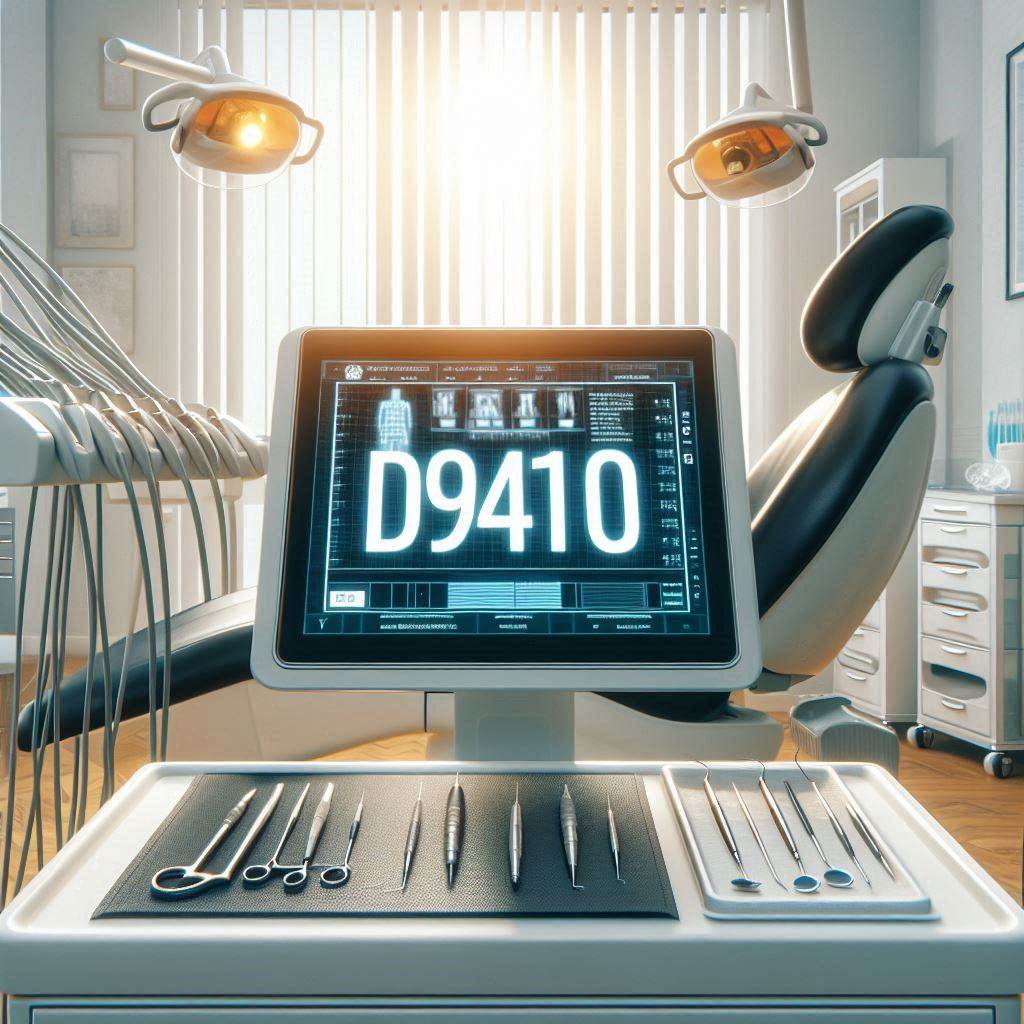D9410 Dental Code: Everything You Need to Know
1. Introduction to D9410 Dental Code
The D9410 dental code is one of the most frequently used yet misunderstood codes in dental billing. Whether you’re a dentist, dental hygienist, insurance specialist, or patient, understanding this code is crucial for accurate billing and optimal patient care.
This article provides an in-depth, exclusive guide to D9410, covering its definition, clinical applications, billing procedures, and common misconceptions. By the end, you’ll have a comprehensive understanding of how and when to use this code effectively.

2. What Does D9410 Represent in Dentistry?
The D9410 code, as defined by the American Dental Association (ADA), falls under the category of “Other Procedures” in the Current Dental Terminology (CDT) manual. Specifically, it refers to:
“House/extended care facility call” – A visit made by a dentist to a patient who is unable to travel to the dental office due to medical or physical limitations.
Key Features of D9410:
- Used for off-site dental services (nursing homes, hospitals, homebound patients).
- Not for routine in-office procedures.
- Often confused with D9420 (hospital or ambulatory surgical center call) but differs in setting.
3. When Is D9410 Used? Clinical Applications
D9410 is applicable in several scenarios:
A. Nursing Home Visits
- Elderly patients with mobility issues.
- Patients requiring palliative dental care.
B. Homebound Patients
- Individuals with severe disabilities.
- Patients recovering from major surgeries.
C. Hospice Care
- End-of-life dental comfort measures.
When NOT to Use D9410:
- Routine check-ups in a dental office.
- Emergency hospital visits (use D9420 instead).
4. Difference Between D9410 and Similar Codes
| Code | Description | Setting |
|---|---|---|
| D9410 | House/extended care facility call | Patient’s home, nursing home |
| D9420 | Hospital or ambulatory surgical center call | Hospital, surgical center |
| D9430 | Office visit for observation | Dental office |
Why the distinction matters:
- Insurance companies reimburse differently for each code.
- Misusing codes can lead to claim denials.
5. Billing and Insurance Considerations for D9410
A. Insurance Coverage
- Medicare: Rarely covers D9410 unless medically necessary.
- Medicaid: Varies by state; some cover it under long-term care benefits.
- Private Insurance: Often requires pre-authorization.
B. Documentation Requirements
- Medical necessity justification.
- Detailed notes on patient’s condition.
- Travel logs (for mobile dentistry).
C. Common Billing Mistakes
- Using D9410 for in-office care.
- Failing to document patient immobility.
6. Common Misconceptions About D9410
❌ Myth: D9410 can be used for any off-site dental work.
✅ Fact: Only for home/extended care facilities, not hospitals.
❌ Myth: All insurance plans cover D9410.
✅ Fact: Coverage varies widely; always verify.
7. Step-by-Step Procedure for D9410
- Patient Assessment – Confirm inability to visit the clinic.
- Pre-Authorization – Check insurance requirements.
- Travel & Setup – Bring portable dental equipment.
- Procedure Execution – Perform necessary treatment.
- Documentation – Record visit details for billing.
8. Case Studies and Real-World Examples
Case Study 1: Nursing Home Resident
- Patient: 85-year-old with dementia.
- Treatment: Oral hygiene maintenance.
- Outcome: Successful claim after proper documentation.
Case Study 2: Homebound Stroke Survivor
- Challenge: Insurance initially denied the claim.
- Solution: Submitted physician’s note confirming immobility.
9. FAQs About D9410 Dental Code
Q1: Can D9410 be used for emergency home visits?
No, emergencies in non-facility settings may require different coding.
Q2: How much does a D9410 visit typically cost?
Fees range from 150−150−400, depending on location and services.
Q3: Does Medicaid cover D9410?
Some states do, but prior authorization is often needed.
10. Conclusion
The D9410 dental code is essential for providing care to homebound and nursing home patients. Proper usage ensures accurate billing and insurance compliance. Always document medical necessity and verify coverage before proceeding.
11. Additional Resources
- ADA CDT Code Manual
- Medicare Dental Coverage Guidelines
- Mobile Dentistry Best Practices (Journal of Dental Research)


